![]()
![]()
![]()
Use LEFT and RIGHT arrow keys to navigate between flashcards;
Use UP and DOWN arrow keys to flip the card;
H to show hint;
A reads text to speech;
15 Cards in this Set
- Front
- Back
- 3rd side (hint)
|
Total Earnings ($) = Wage Rate ($/hr) × Hours Worked (hr) True or False? |
True. |
|
|
|
Two cars moving in opposite direction (towards each other or away from each other), their individuals speed can be added to figure out the expansion (in case they're moving away) or the shrinking (in case they're moving towards each other) gap. |
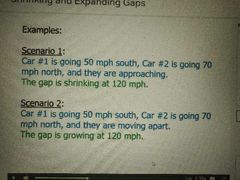
|
|
|
|
Two cars moving in same direction, their individuals speed can be subtracted to figure out the expansion or shrinking gap. They'll shrink when the bigger speed car is behind and expand if the slower speed car is behind. |

|
|
|
|
Two machines working together will have their individual rates/works added together. |
Which means Machine A has a work rate of 1/3 and Machine B has a work rate of 1/2. Together they will be working at a rate of 5/6. |
|
|
|
Compound Interest formula |
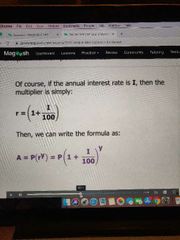
|
|
|
|
Compounding interest formula when we've annual interest rates but the compounding period is less than the one year. |

A = P ( 1+ r/n) ^ nt where A is the final amount consisting of principal and the interest earned both together. |

|
|
|
As the compounding periods decreases, we start to earn more interest. True or false. |
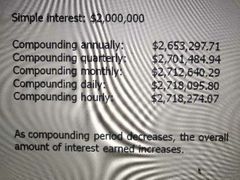
True. |
|
|
|
Simple interest = principal amount x rate x time |
The rate and time should be in same unit. If given interest rate is for annual year and investment is 8- months period then time will be 8/12. |
|
|
|
Constant growth formula |

|
|
|
|
Sum or difference of some number of consecutive integers when we don't know these integers is: (number of integers)(first number) + (double the number of integers) |
For example for 5 consecutive integers, this sum would be: 5x + 10 In this case we don't know what these consecutive numbers are but we are just asked to find their sums. If we knew the numbers we would have used the formula of arithmetic series : S = (a1 + an) n / 2 |
|
|
|
The perfect squares always have a total of odd number of total factors. In other words, a number having odd number of total factors are perfect squares. |
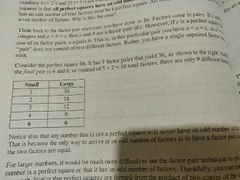
This is because in factor pair, one number/factor is repeated twice since it's a perfect square. |
|
|
|
The prime factorisation of a perfect square contains only even powers of prime. |
For example 144 = 2^4 × 3^2 |
|
|
|
When one travels at speed x for time t and at a speed y for time t (same amount of time), the average speed for the journey is (x+y)/2 i.e. arithmetic mean of x and y.This is because average speed = Total Distance/Total time = (xt + yt)/2t = (x + y)/2 |
True. When one travels at speed x for distance d and at a speed y for distance d (same distance), the average speed for the journey is 2xy/(x+y)This is so because average speed = Total Distance/Total time = 2d/(d/x + d/y) = 2xy/(x + y) |
|
|
|
With simple annual interest, the formula to use is interest amount = principal x rate x time. |
For example, if It is given that $500 = $5,000 (P/100) x 1 (year), so p = 10 percent interest. |
|
|
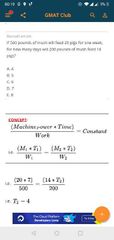
Man hours * time / work = constant. |
(days*time*manpower)/work = constant |
|

